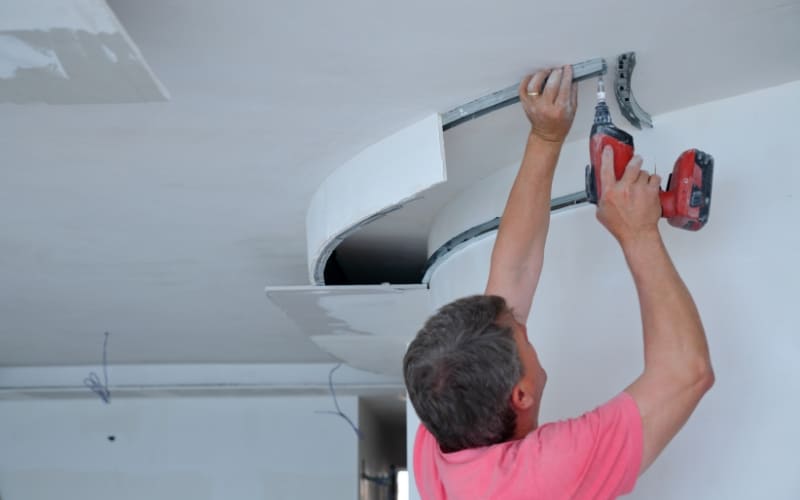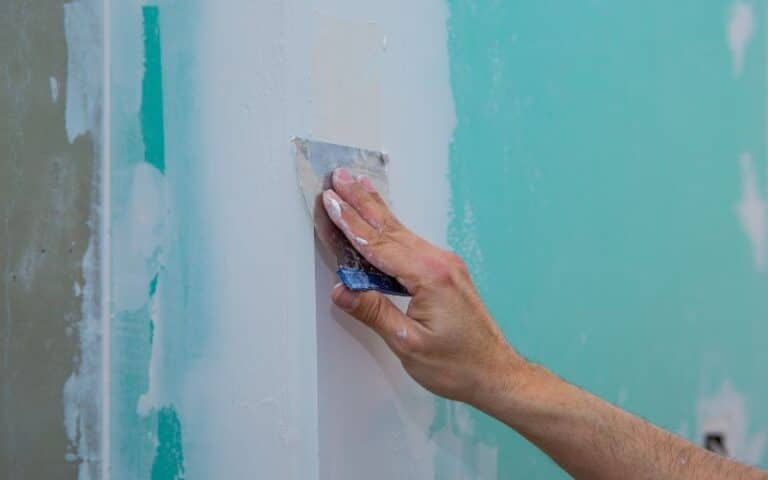Drywalls are a beautiful construction material for walls and ceilings, but they’re still vulnerable to damage, regardless of how thick they are.
And drywall bowing is a common and dangerous problem. Everyone desires a safe home where they can live without worrying about it collapsing.
And the only way that is possible is through a strong foundation. Experiencing this can come as a scare, but early detection is life-saving, so knowing what to expect will help you.
You can detect drywall bowing from cracks in the wall. If they are left unattended, it could cause a collapse. And this problem results from different things, such as water leaks due to unstable soil, and poor drywall installation, making it lack the needed support. Or it could also result from excessive moisture around the wall.
In this article, you’ll discover common causes of drywall bowing, signs of it, and how to eliminate it. You’ll also realize how to prevent it on time to avoid dealing with its consequences.
Ready for a Drywall Quiz?
Why Is My Drywall Bowing?

Knowing why your drywall is bowing is imperative to solving the problem, as it means you can attack the root cause.
This way, you can solve the problem directly and avoid wasting time and resources on areas that don’t require it. Below, I’ve outlined some reasons behind your drywall bowing problems.
#1. Water Pressure
Water pressure is the most common cause of drywall bowing, as this pressure can push up or horizontally against the concrete.
And this pressure results from freezing winter weather and excessive soil moisture.
The ground absorbs water and expands during rainfall; the soil and water outside the drywalls put pressure and tilt inwards.
And if this repeatedly happens, the sign will become evident, leading to visible cracks and even water leaks through the gaps.
This moisture can cause many problems besides drywall bowing, as it could also lead to mildew formation.
#2. Tree Roots
Having trees close to homes is beneficial as it increases the flow of natural breeze and beautifies the area.
However, some invasive tree roots can suck moisture from soil near homes, causing contraction of the foundation.
Therefore, if you have trees near your homes, it’s crucial to provide them with enough water.
Doing this stops them from spreading their fingerlings downwards in search of moisture, thereby drying up the ones needed to keep your foundation steady.
Here are signs of tree root invasion.
- You’ll notice a crack starting from the foundation’s floor.
- You’ll detect vertical cracks in your foundation’s walls.
- Broken/shattered windows
- Lopsided doors and window frames
- Buckling in the floor’s surface: a noticeable change in the drywall and a huge red flag of an impending collapse.
#3. Soil and Settling
Soil shifts naturally depending on its moisture-absorbent nature. And when they do or settle beneath your foundation, it can cause bowing.
For instance, clay soil expands when it absorbs moisture and becomes wet, pushing against the drywalls.
Then when it loses this moisture, it shrinks and assumes its original position, releasing the pressure it previously put on the wall.
And when this continuously occurs, you’ll notice cracks and bowing on your drywall.
#4. Lack of Maintenance
Like all other home parts, even the foundation and drywall require maintenance or will break down soon.
Many home foundations have waterproof coatings and other items applied to make them stronger, but they can weaken over time.
And this is why maintenance is crucial, as it helps you detect areas that need retouching.
But some people fail to do this, so the drywall becomes exposed to moisture with no waterproof coating to protect it. Thus, it loses its structural integrity, becoming vulnerable to bowing.
#5. Poor Construction
Aside from other problems stemming from after the drywall’s installation, you should note that the problem behind its bowing can also result from its construction.
For example, suppose the drywall installation was done quickly without enough period to gather all necessary materials, and the contractor used shortcuts to achieve results.
In that case, problems will arise later. Also, it could result from using an inaccurate sill plate, backfilling the trench before curing concrete, or even inappropriate drywall panel sizing.
All these could cause drywall bowing, so ensure to be cautious during construction. To be on the safer side, here’s a table showing the dos and don’ts of drywall installation.
It will show you what to avoid and do to help you avoid poorly constructed drywall that can become vulnerable to bowing over time.
| Dos | Don’ts |
|---|---|
| Use the right amount of drywall screws, preferably around 26 to 38 per sheet, and they should be coarsely threaded. | Don’t use nails, as they can’t hold the drywall’s entire weight and may result in a collapse. |
| Use the right screwdriver bit for the job. For example, Philip, Robertson, Slotted (flathead), or Pozidriv will work. | Avoid covering your joint tape with lath as it weakens it, making it prone to damage. |
| Use a stud finder to ensure your drywall sheets are screwed in well and at 90-degree angles. | Avoid over-tightening the screws. It could damage the drywall by causing significant holes in them. |
| Leave the drywall’s joint tape until it’s dry to avoid ruining your work. | Avoid cutting off the drywall’s sharp edges as they make cutting through it easy and less strenuous. |
| Leave enough space around the stud’s area to increase their durability and accessibility. | Avoid using tangent edges on drywalls. Instead, it’s better to cover them with corner beads. |
How Do I Fix a Bowing Drywall?
Fixing drywall is possible only by replacing the drywall itself and eliminating the root cause of the problem. Here’s a step-by-step guide to replacing and repairing the bowing drywall.
Step 1: First, find the drywall studs close to the bowed area using a stud finder and mark them. It makes drywall removal easy.
Step 2: Use a pry bar to remove the old drywall popping off all screws, and continue until you’ve removed all old walls.
Step 3: Use a hammer and screwdriver to unfasten all remaining screws and remove them. Keep the screws safe, as you’ll be needing them.
Step 4: Cut the new drywall from the sharp edge and measure it to ensure it fits the empty wall.
Step 5: Hang the new drywall in the empty area and use a power screwdriver and drywall coarse-thread screws to fasten them securely.
Use one screw for 12 inches, and don’t over-tighten them.
Step 6: Use self-adhesive tape to tape the drywall’s seams. Using this tape eliminates the need for mud/joint compound, although you can still use it.
Step 7: Apply joint compound over the joint tape spread and & smoothen it with a drywall knife, and allow it to dry for four to six hours.
Step 8: Sand the joint compound on the drywall to achieve a smooth surface until it’s flush to touch and level.
Is It Normal for Drywall to Bow After Some Time?
Drywall bowing is normal, especially from natural sources like expansive soil and water pressure.
Bowed drywalls of 2 to 4 inches are acceptable as moderate defects as they’re still in the early stages. Moreover, simple fixes like tie-backs, wall anchors, or steel beams can solve the issue.
But bowed drywalls beyond 6 inches are a problem and require urgent replacements; otherwise could be fatal.
How to Prevent Drywall Bowing?
First, the best way to prevent drywall bowing is to know the root cause. And earlier on, we discussed some reasons for drywall bowing, where we mentioned water, soil, trees, etc.
Knowing this information makes it easier to prevent bowed drywalls. And for the water pressure issues, it’s best to find out if there are any leakages near your house.
Check for overfilled drainages and leaks in pipes. The bottom line is to find a way to reduce the moisture level around drywall.
It will also be beneficial to install dehumidifiers and French drains near your area to help dry up moisture from your home and walls.
And for soil, try to replace expansive soil with quick draining. Lastly, ensure proper foundation maintenance frequently.
This way, you’ll be fortunate to detect early drywall bowing and fix them before they worsen.
You could also have a professional contractor inspect your foundation to help eliminate recurring issues and improve the foundation.
Is a Bowed Drywall Dangerous?
Bowed drywalls are dangerous as they increase the likelihood of collapsing, putting lives and properties at risk.
Additionally, it creates gaps allowing moisture to enter, which can cause mold and mildew growth, resulting in breathing problems, eye irritation, and other issues.
Fortunately, there are signs of structural damage you should keep an eye out for, and when you notice them, don’t hesitate to contact a professional for repair.






